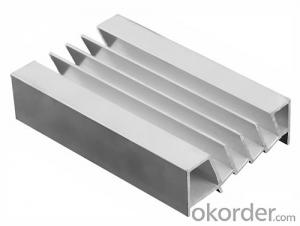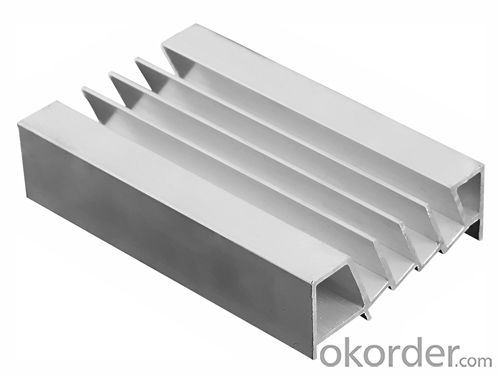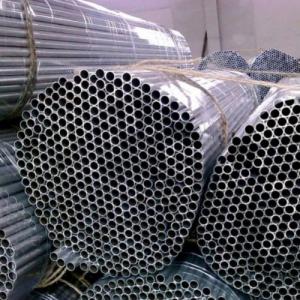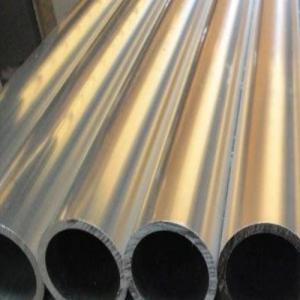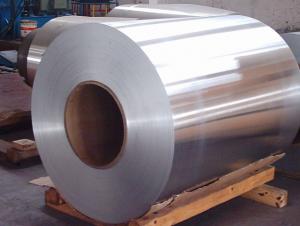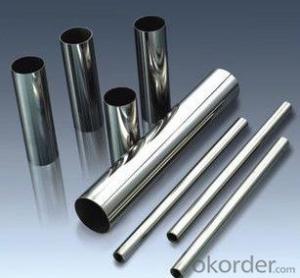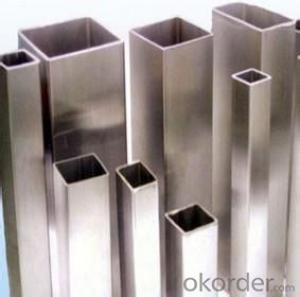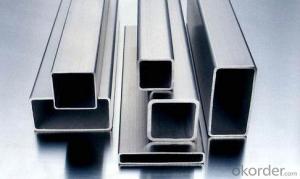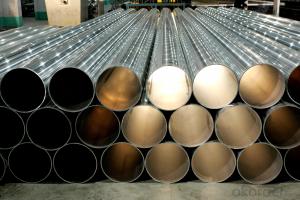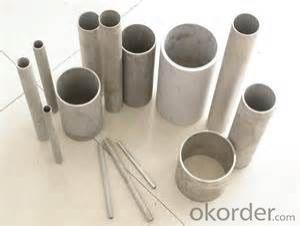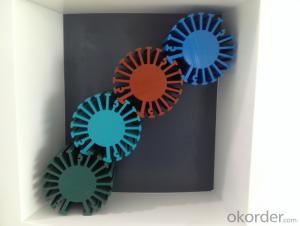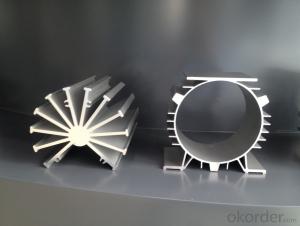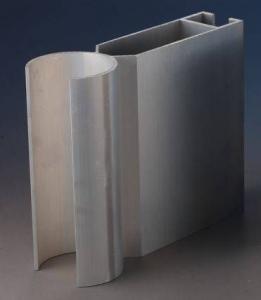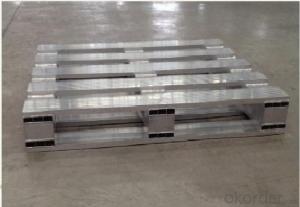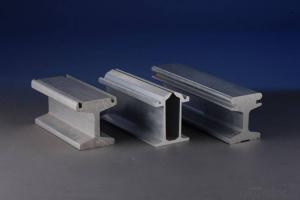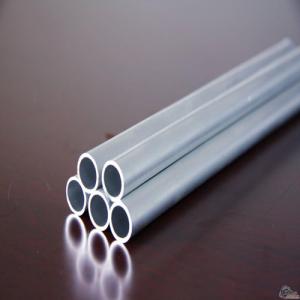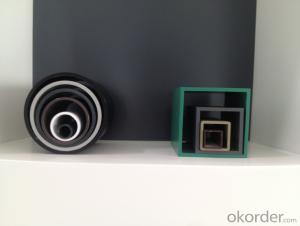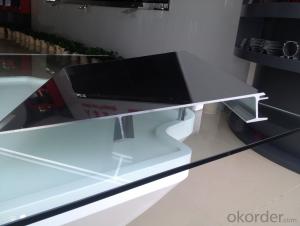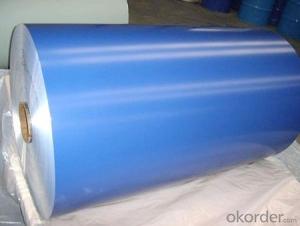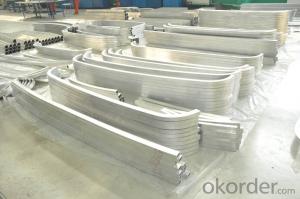Aluminum Fan Aluminum Pipes
OKorder Service Pledge
OKorder Financial Service
You Might Also Like
We are the largest aluminum profilemanufacture in
We can provide such heat sink as belows:
Material | Alloy Aluminum 6063,6061,6005,6082 or customer nominated |
Temper | T3, T4, T5, T6 and other |
Surface | Anodize, electrophoresis, powder coating, PVDF coating, etc. |
Colour | Any colour based on Standard Germany RAL Mark |
Length | According to the drawings |
Good Package | Inner plastic film /outside carton/wooden pallets |
Payment Method | T/T, L/C, etc |
Delivery Time | Normally 2-4 weeks, Delivery time can be consulted. |
Press Machine | 500-12500 tons all together 93 press lines. |
Fabrication | 1. Hest sink 2. Drilling; 3. Bending; 4. Cutting; 5. etc. |
Certificate | ISO/TS 16949,DNV,IRIS,CCS,AFA,etc. |
Dies | 1. Using our dies, no fee; |
2. Using customer drawing, opening dies, usually about 5~50 tons then the dies cost can be refunded. | |
3. Die cost is negotiable base on the order quantity | |
Capability | Annual output 800,000 tons |
- Q: Can aluminum pipes be used for compressed air systems?
- Yes, aluminum pipes can be used for compressed air systems. Aluminum pipes offer several advantages for compressed air applications. Firstly, aluminum is lightweight, making it easier to handle and install. Additionally, aluminum pipes are corrosion-resistant, which is crucial for maintaining the integrity of the compressed air system. Aluminum pipes also have a smooth interior surface, which reduces friction and pressure loss, resulting in more efficient air flow. Furthermore, aluminum is non-toxic and does not release any harmful substances into the compressed air. Overall, aluminum pipes are a reliable and cost-effective choice for compressed air systems.
- Q: How to distinguish between copper tube or aluminum pipe?
- I am back to a repair is already installed. I worried about this version is not the original version, tangled ah, he said can Quanguolianbao 3 months but you have to take what I call if I give evidence of bad warranty can be taken directly that you can trustChasing the answerIs it mainly made of copper tubes into aluminum tubes now?. If it is, you can ask for replacement, the aluminum pipe is not innate than copper tube, especially for a long time, the aluminum tube is easy to punch.
- Q: Brass or aluminium tube for internal and external air conditioner?
- Some manufacturers for the cost on the tubes, each also has been used before, Rui tubes, not how many years
- Q: What is the cost of aluminum pipes compared to other materials?
- The cost of aluminum pipes can vary depending on factors such as size, grade, and market conditions. Generally, aluminum pipes tend to be more affordable compared to other materials like stainless steel or copper. However, it is always advisable to check with suppliers or conduct a market analysis to get accurate and up-to-date pricing information.
- Q: How to weld the refrigerator aluminum tube?
- Flame brazing of aluminium tube for refrigerator.Because the refrigerator aluminum tubes are relatively small, relatively thin, and more used for copper tube, aluminum pipe or aluminum pipe copper pipe welding, of course, there are aluminum pipe, aluminum pipe welding. From the above three situations, can be divided into the following welding methods1, if it is aluminum brass or brass tubes connected, can choose Wei Odin copper aluminium welding rod flame brazing welding, the welding work at the melting point of 480 degrees, is cored electrode without the use of complex welding powder.2, if it is connected to the aluminum tubes, aluminum welding can be used WEWELDING Q303, with no need to use liquefied petroleum gas spray welding powder, heating WE53 special welding parts to 500 degrees, and then use the wire in welding parts with a wire tip forming flame burn slightly. Can also use ordinary ER4047 aluminum wire with aluminum powder to WE53-F welding, the welding cost is relatively low, but the technique requirements are relatively high. For expert use.
- Q: Are aluminum pipes fire-resistant?
- Yes, aluminum pipes are fire-resistant. Aluminum has a high melting point, allowing it to withstand high temperatures without melting or catching fire. Additionally, when exposed to fire, aluminum forms a protective oxide layer that acts as a barrier against further heat damage.
- Q: My company plans to rust aluminum 15 Phi Phi 8 hit a row of holes, then Phi 8 Phi 15 in aluminum pipe welding, welding oxyacetylene welding using plan copper welding current, using nitrogen or nitrogen and hydrogen in welding. As a result, many welding leaks and air holes were found in aluminum tube welding, and the welding success rate was low. How can I improve it?
- Aluminum alloy welding is most afraid of hydrogen and nitrogen. Oxyacetylene welding itself is hydrogen protection, but the welding of aluminum alloy is not good.
- Q: 1100 what's the match between the aluminum material and the material? Thank you
- Moreover, different alloy compositions, its mechanical performance is also a great difference, the 1 lines are not Aluminum Alloy heat treatment, 6 belong to the Aluminum Alloy heat treatment, the user must according to the product performance, and the Aluminum Alloy grades reasonable.
- Q: I have used ab repair several times, each time with only three months and leakage of fluorine, hope you master generous with your criticism,
- The best is aluminum, brass or change.Can also use high temperature electric iron, plus solder wire can also be welded to live
- Q: What is the tensile strength of aluminum pipes?
- The tensile strength of aluminum pipes may differ depending on the specific grade and alloy of aluminum utilized. However, typically, aluminum pipes exhibit a tensile strength spanning from 30,000 to 45,000 pounds per square inch (psi). It is worth mentioning that the tensile strength of aluminum pipes can be improved via diverse methods like heat treatment or alloying with other metals. Furthermore, the pipe's diameter and thickness can also impact its tensile strength. Consequently, it is advisable to refer to the manufacturer's specifications or perform dedicated material testing to ascertain the precise tensile strength of a specific aluminum pipe.
Send your message to us
Aluminum Fan Aluminum Pipes
OKorder Service Pledge
OKorder Financial Service
Similar products
Hot products
Hot Searches
Related keywords
